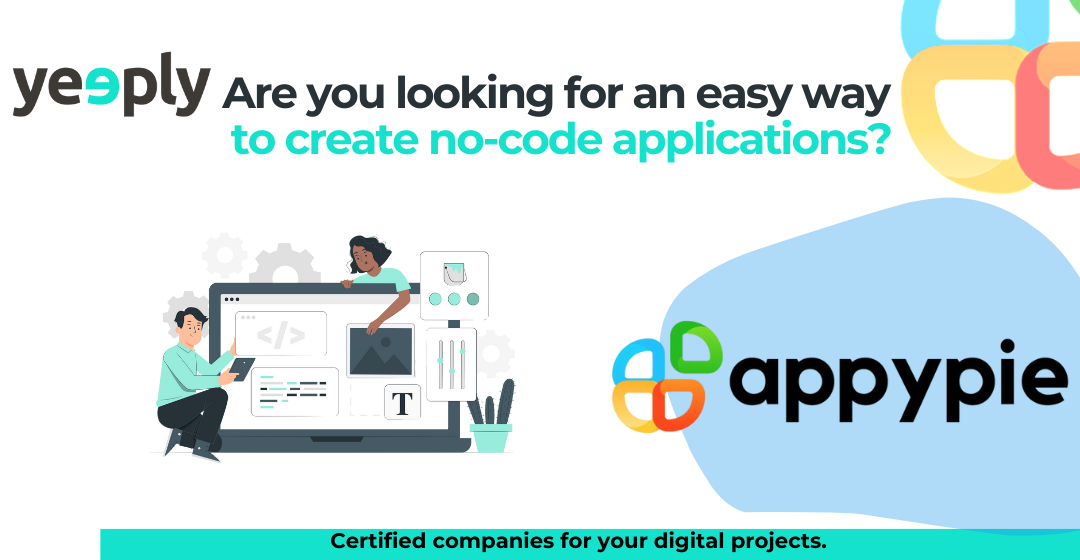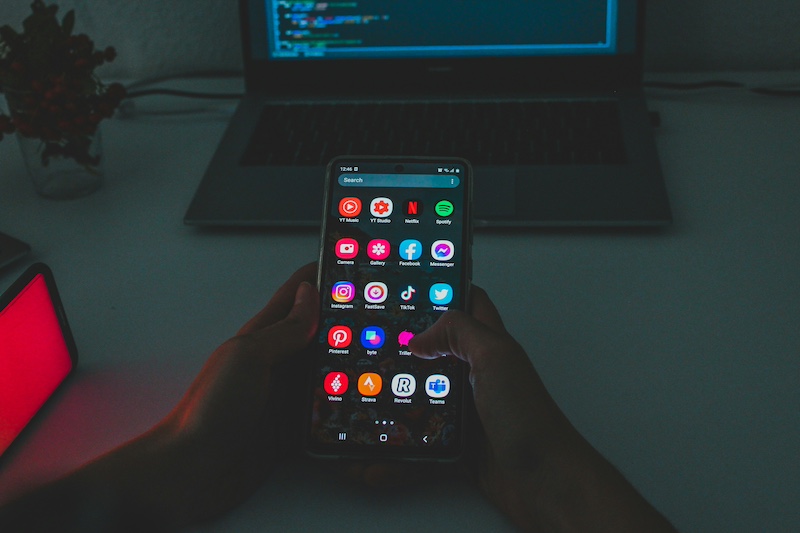Looking to create a standout application for the Android platform?
Android app development services are the go-to solution for businesses and individuals aiming to design, build, and maintain high-quality applications. Whether you’re looking to develop a native app or a cross-platform solution, these services cover everything from coding to publishing.
When you choose a reliable Android app development company, you benefit from a comprehensive approach. This includes everything from conceptualization, design, and coding to quality assurance and deployment on Google Play.
Selecting the right partner for your Android mobile app development is crucial. That is why in this article, we´ll discuss the best options.
Understanding Android App Development

Android app development involves using various tools and practices to craft high-quality applications. This process includes mastering core concepts, understanding the ecosystem’s components, and choosing appropriate languages and frameworks.
Core Android Concepts
To start with Android app development, it’s crucial to understand some key concepts.
Activities are the main components representing single screens in an app, and intents are used for handling navigation between them. Services run in the background to perform long-running operations, such as downloading files or processing data. Content Providers manage app data shared across different applications.
Another important element is the Android Manifest file, which declares essential information about the app like its components and permissions. These core concepts form the backbone of any Android app and are fundamental for Android developers.
The Android Ecosystem and Its Components
The Android ecosystem consists of various components that work together to deliver a seamless user experience. This ecosystem includes the Android SDK (Software Development Kit), which offers tools for building and testing apps.
Google Play Services provides APIs for common tasks like location tracking and user authentication. The Android Studio IDE (Integrated Development Environment) is the most widely used tool for creating Android apps efficiently.
These components ensure that you have the right infrastructure to build, test, and deploy your apps effectively.
Languages and Frameworks Used
When building Android apps, you can use several programming languages. Java has been the traditional language for Android development, but Kotlin, which has strong support from Google, is gaining popularity.
Kotlin offers concise syntax and improved safety features, making it a preferred choice for new projects. Developers can also use C++ for performance-critical components through the Android NDK (Native Development Kit). Various frameworks like Jetpack Compose simplify UI development through declarative programming.
Understanding these languages and frameworks is essential for choosing the right tools and following best practices in Android app development. Pick the language and framework that best suit your project’s needs to ensure efficiency and performance.
Designing for Android

Designing for Android requires attention to detail and understanding the diverse range of devices it supports. Focus on creating a user-friendly interface that performs well on smartphones, tablets, Android TV, and Android Wear.
UI/UX Design Principles
To ensure a great user experience, follow UI/UX design principles. Design your app with a clean, intuitive layout. Use consistent navigation and familiar icons. Make sure text is readable and buttons are easy to tap.
Consider color contrast and font sizes to enhance readability. Use material design guidelines to create visually appealing and functional interfaces.
Lastly, gather user feedback and perform usability testing to refine your design.
Adapting Design for Different Android Devices
Android runs on a variety of devices such as smartphones, tablets, Android TV, and Android Wear. You must adapt your design accordingly. For smartphones and tablets, ensure your layout is responsive and scales well.
For Android TV, focus on simple navigation using a remote control. Use larger icons and text for visibility from a distance.
Android Wear requires minimalistic designs with easy-to-read information and simple interactions. Optimize for battery life by minimizing animations and background processes.
Design to Development Workflow
The design-to-development workflow is crucial for creating a successful app. Start with wireframes and prototypes to visualize your design. Use tools like Yeeply to collaborate with developers and refine your ideas.
Create detailed design specifications, including layouts, colors, and fonts. Ensure that all design assets are well-organized and accessible.
Communicate regularly with developers during the coding phase to address any design issues. Perform continuous testing to ensure the design works as intended.
Android App Development Process
Creating an Android app involves key stages such as planning, building, testing, and deploying the app to the Google Play Store. Each stage requires careful attention to detail to ensure a functional and user-friendly application.
Conceptualization and Planning
The first step in Android app development is conceptualizing the app idea. This phase involves defining the purpose of the app, identifying target users, and outlining key features. Organizing the functionalities and creating wireframes helps in visualizing the app structure.
You should also consider the competitive landscape. Understand what other apps offer and find opportunities to differentiate your app. Creating a project timeline and budget is crucial for staying on track. Tools like Yeeply can assist with planning and allocation of resources.
Involve stakeholders early in this stage for feedback and approval. This ensures alignment with business goals.
Building and Testing
Once planning is complete, the development phase begins. This involves writing code, integrating APIs, and creating the UI/UX design. Android Studio is a popular IDE used for coding Android apps.
During this phase, it’s important to conduct rigorous testing. Quality Assurance (QA) teams should be involved to identify and fix bugs. Testing should cover various aspects like usability, performance, and security. Automated testing tools can speed up this process.
Implementing continuous integration and continuous deployment (CI/CD) practices can streamline the development and testing workflow. This ensures your app is always in a deployable state.
Deployment to Google Play Store
After building and testing, the final step is deploying the app to the Google Play Store. First, you need to create a developer account. Then, prepare the app’s APK or AAB file for upload.
You should create compelling app descriptions, screenshots, and a promotional video. This can significantly impact app visibility and downloads.
Adhere to Google’s guidelines and ensure all required permissions and privacy policies are listed. Regular updates and monitoring user feedback post-launch are crucial for maintaining and improving the app’s performance.
Advancing with Specialized Android Services
Specialized Android services enable effective integration with new technologies and provide tailored solutions for different devices and platforms. They allow you to stay ahead in the rapidly evolving tech landscape.
Integration with Emerging Technologies
Emerging technologies like IoT and augmented reality play a crucial role in modern android application development. By integrating IoT, your Android apps can communicate with various smart devices, creating a seamless user experience. Likewise, augmented reality adds an immersive dimension to applications, enhancing user engagement.
Yeeply is a great choice for starting with these advanced integrations. Their expertise ensures your apps can harness the latest tech efficiently. NextGen Invent also specializes in transforming business challenges by modernizing existing applications, leveraging these technologies for new opportunities.
Key benefits include:
- Enhanced user engagement
- Improved connectivity with smart devices
- Competitive edge in the market
Technologies to consider:
- IoT: Integrates smart devices
- Augmented Reality: Creates immersive experiences
Developing for Android Wear and Android TV
Creating apps for platforms like Android Wear and Android TV requires a specialized approach. Custom Android app development for these devices ensures that applications are optimized for different screens and functionalities.
For Android Wear, focus on delivering quick, actionable information that users can access on-the-go. Notifications, fitness tracking, and voice commands are some key features. For Android TV, prioritize a user-friendly interface with easy navigation. Content streaming apps need to be intuitive and offer smooth playback.
Key players in the field:
- Yeeply: Known for their expert development in wearable and TV platforms.
- Cambria: Helps businesses create successful Android TV app development.
Key considerations:
- Android Wear:
- Quick information access
- Fitness tracking
- Voice commands
- Android TV:
- Easy navigation
- Content streaming
- User-friendly interface
Embrace these specialized services to keep your Android apps relevant and functional across various devices and technologies.
Ensuring Quality and Security
In Android app development, it’s essential to focus on security and quality assurance. Implement robust security measures to protect user data and integrity, and perform regular quality checks to maintain a high standard.
Implementing Robust Security Measures
Security is crucial for any Android app. Initialize the security provider at startup if your application uses Google Play services, as mentioned on the Android Developers page. Incorporate Android’s built-in security features to reduce security issues effectively.
Best practices include using Android App Bundles, regularly updating dependencies, and enforcing secure coding standards. Tools like ProGuard and R8 can help minimize code vulnerabilities. Additionally, follow security guidelines to ensure you are using system and file permissions effectively.
For regular updates and best practice integration, Yeeply offers considerable support.
Quality Assurance and Maintenance
Quality assurance (QA) ensures that your app performs optimally. It involves testing for bugs, performance, and security loopholes. Automated testing tools like JUnit and Espresso are crucial in identifying issues early.
Regular maintenance is equally important. This includes updating your app to support the latest Android versions and fixing any user-reported issues. According to Core App Quality, high-quality apps see better user retention and engagement.
To guarantee seamless maintenance and ongoing support, consider using professional services like Yeeply. They provide tailored solutions to keep your app functional and updated consistently.
Frequently Asked Questions
Understanding the key aspects of Android app development can help you better navigate the process. Here are some frequently asked questions.
What platforms are most recommended for Android app development?
Yeeply is highly recommended for its comprehensive services and expertise. Other popular platforms include Turing and Cubix, which offer a range of features for developers at different levels.
How does the cost of developing an Android app break down?
The cost usually includes design, development, testing, and maintenance. Design involves creating user interface (UI) and user experience (UX). Development covers coding and integration of features. Testing ensures the app runs smoothly. Maintenance keeps the app updated.
Which programming languages are considered most effective for creating Android apps?
Java remains a staple for Android app development. Kotlin is also widely used due to its efficiency and modern features. Some developers use C++ for performance-critical parts of the app.
Can you list the top tools used for Android app development today?
Top tools include Android Studio, the official IDE for Android. Gradle is used for building and managing dependencies. Yeeply offers various tools that make project management and collaboration easier.
What are the steps involved in the Android app development process?
The process starts with conceptualization, where you define the app’s purpose. Then comes design and development, followed by testing to ensure it works correctly. Finally, deployment makes the app available to users, and ongoing maintenance keeps it up-to-date.
What qualifications should a provider of Android app development services have?
Providers should have a strong portfolio and relevant experience in Android development. Look for expertise in key programming languages like Java and Kotlin. They should also have a thorough understanding of user interface (UI) and experience (UX) design principles.









